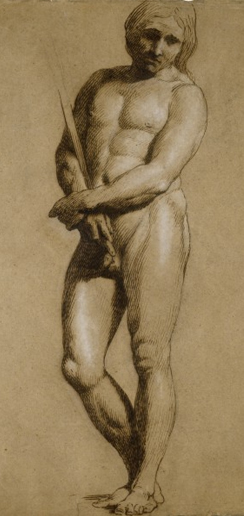SIR WILLIAM Hamilton, the British ambassador to Naples and the connoisseur whose collection of Ro-man coins, Greek vases and other archaeological remains did much to shape Neoclassical taste, had an unusual mistress. Emma Hamilton (they never, in fact, got married) had one great gift, an uncanny ability to impersonate classical statues.
Goethe, who visited Hamilton in 1787, left an illuminating description of Emma and her famous ''atti-tudes'': ''Sir William has had a Greek costume made for her which becomes her extremely. Dressed in this, she lets down her hair and, with a few shawls, gives so much variety to her poses, gestures, expressions, etc, that the spectator can hardly believe his eyes.'' Hamilton ''idolises her'', Goethe added, because ''in her he has found all the antiquities, all the profiles of Sicilian coins, even the Apollo Belvedere''.
But people, unlike artefacts, age quickly, and as Emma grew less and less like the works of art which she imitated - she became monumentally fat, for one thing - Hamilton tired of her. She died, impoverished and alcoholic, in Calais in 1807, a victim of the very taste that had created her.
There is a slight drawing of Emma Hamilton doing her stuff, by Angelica Kauffmann, in ''The Artist's Model'', at Kenwood House. It might be seen as something of a freak, an eccentric inclusion in a show whose subject is academic art education in Britain during what has come to be known as the Neoclassical period. Yet the idea that beauty is an essentially sculptural attribute, and the peculiar ambition to transform living flesh into dead marble implicit in Emma Hamilton's antics, go straight to the heart of Neoclassical aes-thetics.
Neoclassicism - a loose and unsatisfactory designation, but one that nevertheless describes with some accuracy the common urge among artists in the...


